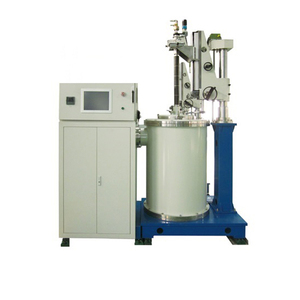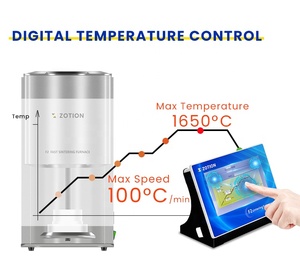
All categories
Featured selections
Trade Assurance
Buyer Central
Help Center
Get the app
Become a supplier

(77 products available)



























A monocrystalline silicon furnace creates solar cells that can produce a high level of energy from sunlight. There are three types of furnaces commonly used to grow monocrystalline silicon: the aligned vertical gradient freeze (AVGF), the Luminaor process, or the Czochralski method, also known as the CZ method.
The specifications of a monocrystalline silicon furnace vary depending on the type and manufacturer. The following specifications are crucial when considering a monocrystalline silicon furnace.
Like all industrial machines, the monocrystalline silicon furnace requires regular care and maintenance so that it can operate more effectively. Following are a few maintenance tips for the monocrystalline furnace.
Crystals grown by the monocrystalline silicon furnace have many uses in high-tech industries. Here are some common ways this equipment is used in industry:
Solar cell panel manufacturing
A big chunk of the monocrystalline silicon is the main material for solar cell panels. Using a monocrystalline silicon furnace can ensure that the solar cell panels have a better conversion efficiency, which will increase power generation and profit margins.
Semi-conductor chip-making
Semiconductor chips are made with monocrystalline silicon. The monocrystalline silicon is cut into thin slices, also called wafers, and these wafers are the foundation that monocrystalline silicon furnaces create. A monocrystalline silicon creates a single crystal structure, which provides semiconductors with zero defects and better performance.
Optical lens industry
Some high-performance optical lenses, such as aspherical lenses and crystalline lenses, are made of monocrystalline silicon. The monocrystalline silicon is melted in a furnace and then cooled and solidified to form a single crystal, which is then cut and polished into an optical lens shape.
Laser technology
Industries that use lasers, like laser cutting and engraving, often use monocrystalline silicon lenses. They're made in a furnace with precisely controlled crystallization and solidification processes. Monocrystalline silicon semiconductors have critical roles in laser technology as components like laser diodes and laser chambers.
Micro-machine technology
Monocrystalline silicon substrate wafers are the foundation of micro-machine technology. This includes sensing elements, actuators, and other micro-machine devices. Using a monocrystalline silicon furnace can ensure that the structure is regularly and the performance is stable, which meets the requirements of micro-machine technology.
For buyers, it's crucial to select the right type of monocrystalline silicon furnace based on specific needs and requirements.
Intended Application:
The primary use should be the first factor to consider. Are buyers focused on creating solar cells, semiconductors, or other specific applications? Different furnaces are tailored for distinct goals. For instance, the CPCZ or ZD method furnaces are popular for solar cell production, while the Czocharlski method is favored for semiconductor-grade monocrystalline silicon.
Production Scale:
How much material does one need to generate? It's essential to align the furnace's capacity with future needs. Small-scale furnaces might suffice for research centers, while large-scale industries could seek high-capacity production units. Think about the scale now and in the foreseeable future.
Cost Considerations:
Bidding is later leveraged based on distinct requirements and priorities, from budget constraints to quality demands. Remember that expensive isn't always better. There are mid-range options that perform exceptionally well. Always focus on the best value for the budget.
Furnace Types:
As discussed above, everyone has specific pros and cons based on usage. Research all choices carefully before deciding. What works for one industry might not be ideal for another? Always match the furnace to business needs rather than following trends or what's popular.
Quality and Reliability:
When it comes to the furnaces, material quality and consistent performance are vital. Seek models built to last under demanding conditions. Higher quality units lower maintenance needs and operational costs down the line. Inexpensive, low-quality models may save money upfront but will quickly become costly burdens to replace and repair.
Supplier Support:
Choose suppliers who will be there. It's essential to find a supplier offering ongoing support, from installation assistance to repair services when needed. Make sure they have spare parts readily available too. A strong local distribution network makes everything easier. Count on suppliers who provide simple, timely solutions whenever required.
Q1: Why are monocrystalline solar panels better?
A1: Monocrystalline solar panels are known to be the most efficient type. They take up less space per watt and consistently perform better in high-temperature situations.
Q2: Why is monocrystalline better?
A2: Monocrystalline silicon is a distinct type of silicon made up of a single crystal structure. This uniform composition gives monocrystalline silicon superior electronic properties, making it an ideal choice for various high-performance applications, including semiconductors and solar cells.
Q3: How long does monocrystalline last?
A3: On average, they'll last to 25 years and possibly longer if well looked after. Monocrystalline solar panels are typically backed by a 25-year warranty, which means manufacturers are confident they'll last for this long at least.